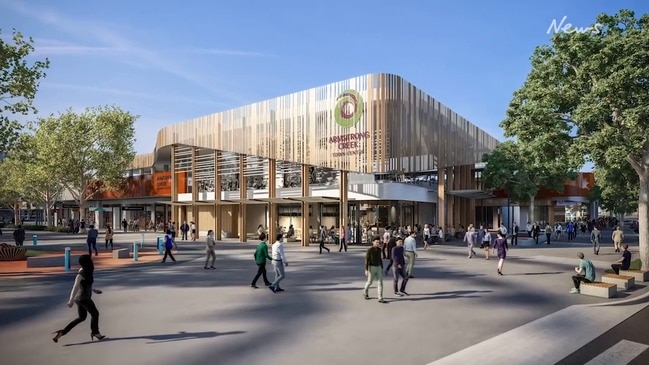How Geelong will cope with mass population boom
Demographers predict Geelong’s population could surge by 50 per cent in two decades to just under 400,000 by 2041. Here’s how council plans to make it work.

Geelong
Don't miss out on the headlines from Geelong. Followed categories will be added to My News.
Demographers predict Geelong’s population could surge by 50 per cent in two decades to just under 400,000 by 2041.
And Geelong needs trackless trams and a bolstered rail network to cope with the population explosion, council says.
Respected demographer Bob Birrell said the predicted boom could see outer Geelong suburbs meet up with the outer fringe of Melbourne, effectively connecting Victoria’s two biggest cities.
“Melbourne is such a major recipient of migration and that’s contributed to forces pushing the suburban frontier of Melbourne into Geelong and beyond,” Mr Birrell said.
The latest projections are slightly higher than those listed in the City of Greater Geelong’s Settlement Strategy that predicts Greater Geelong’s population will reach between 352,300 and 387,900 by 2036.
Mayor Stephanie Asher said the strategy, released in October 2018, would “guide us” in meeting the housing needs of the community until 2036.
“Our aim is to preserve the things we all love about Greater Geelong — such as our beautiful natural environment, our strong sense of community and our relative lack of congestion — while becoming a bigger city,” Cr Asher said.
“This is in line with the community’s 30-year clever and creative vision, and fits with our status as Australia’s only UNESCO City of Design.”
The majority of new population growth will be directed towards Armstrong Creek, and planned new Northern and Western Growth Areas near Lovely Banks and Batesford which would have the ability to house 110,000 residents.
It’s expected Armstrong Creek’s population will eventually reach around 55,000.
Cr Asher said council is already investing heavily in community facilities and infrastructure — such as new childcare centres, community hubs, and sporting and recreational facilities — to support our growing population, and that it was strongly advocating for public transport improvements to mitigate potential traffic impacts across the region, particularly in the CBD and on the Bellarine Peninsula.
MORE NEWS
CITY LOCKDOWN OVER SUSPICIOUS PACKAGE
SAFETY FEARS STOP CBD BUILDING DEMOLITION
GEELONG’S MOST EYE CATCHING DEVELOPMENT PLANS
“Improvements to public transport are at the top of the list, including the planned duplication of the rail line between Waurn Ponds and South Geelong, and more frequent and direct bus services — especially to the Bellarine,” Cr Asher said.
“We’re also very open to discussing innovative new ideas such as trackless trams.”
Trackless trams run on streets and have rubber wheels and are understood combine the best features of trams, buses and light rail.
Geelong representatives toured China in November to explore the potential for a pilot of the trackless tram to be deployed in Geelong using Deakin University’s park and ride route between Belmont and the Waterfront.
Mr Birrell said Geelong may cope with huge projected growth better than Melbourne because the rate of growth was not as fast.
“Geelong is probably in a better situation to cope because it hasn’t been growing as fast as Melbourne and the immediate suburban periphery of Melbourne,” he said.
“It has a bit more capacity before it runs into the really severe problems Melbourne is running into.”
Originally published as How Geelong will cope with mass population boom
